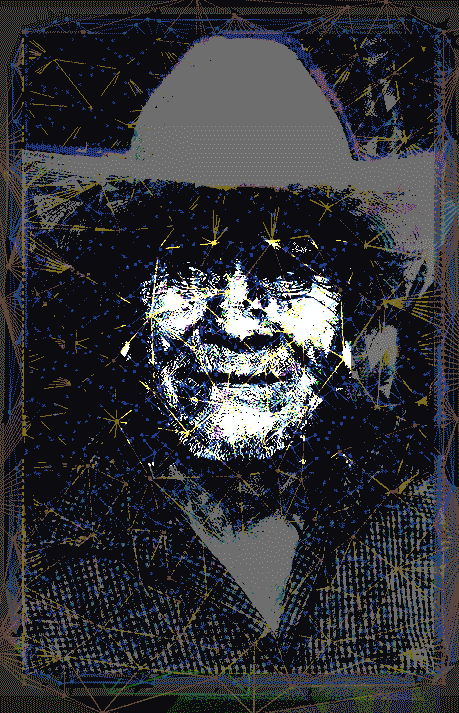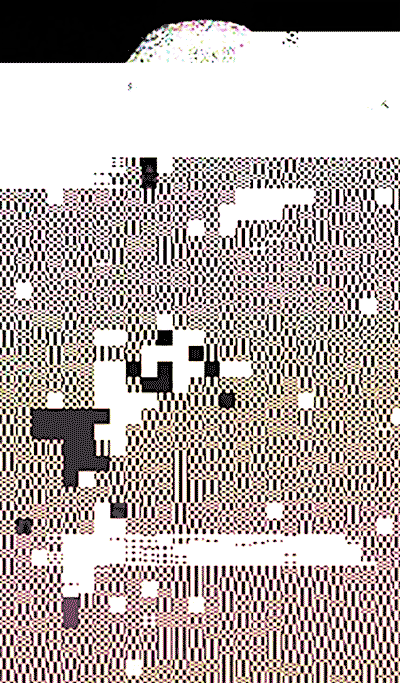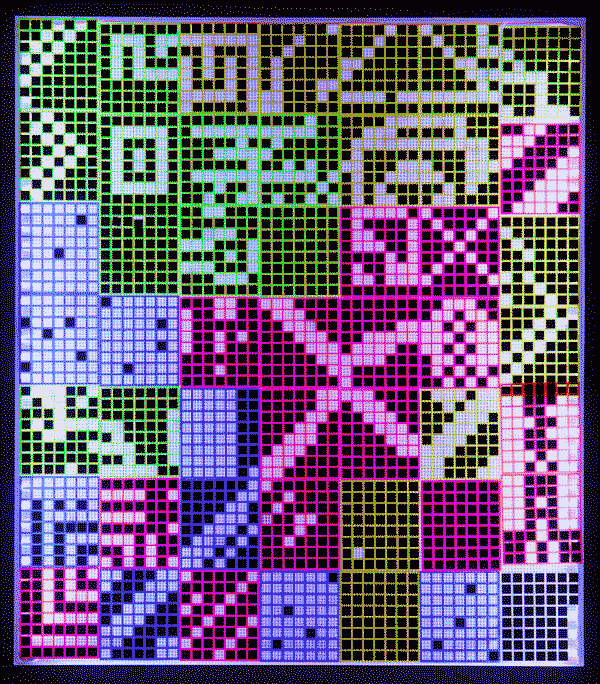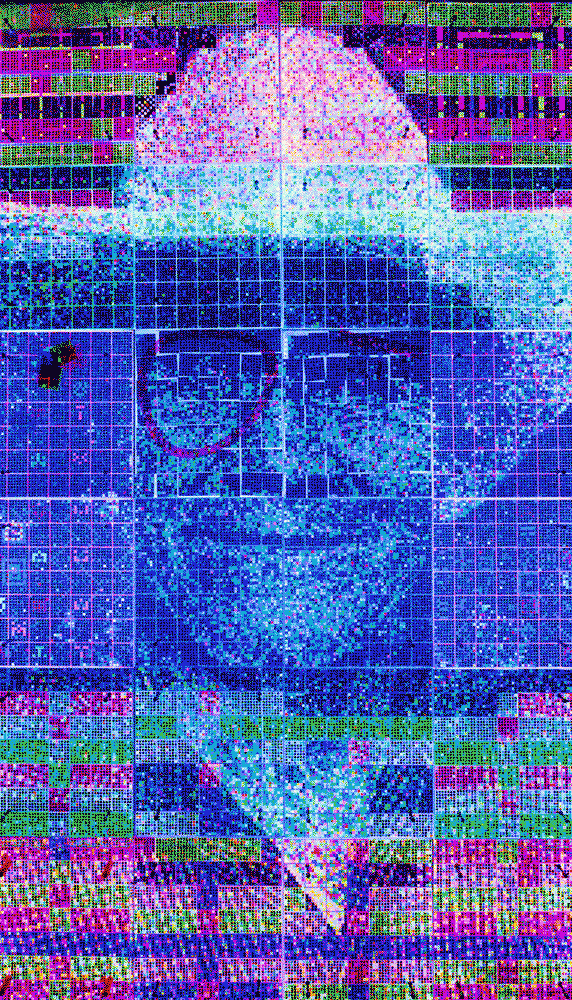peter thiedeke
image maker
TWIFSY is a work-in-progress modular installation made from backlit acrylic components. A fixed, static image appears to change as the illumination, brightness, colour, and angle of view modulate.
Dimensions of 8-panel floor section (as partially exhibited at POP and in the video above): L 237cm x W 104 x H 18cm
Full dimensions: when wall-mounted as 24 panels (as illustrated below): H 354cm x W 204 cm x D 18cm
Other configurations (the panels are modular and can be re-configured to meet spatial constraints): Single Stack Tower H 432 cm x L 59cm x W 51cm; 4 Stacks H 108 cm x L 236cm x W 204 cm
Materials: Acrylic, resin, stainless steel, recycled LCD computer screen components, RGB LEDs, CAT6 Ethernet cable, DMX512-A and Art-net software protocols, micro-servers, LRS-150-12 power source, 25a 2-core tinned power cable.
Details - Inside the installation
These macro images demonstrate the the detail inside of the installation structure. The resin render-ghost figures are approximately 23mm high.






















Artist statement
An exploration of past and future narratives of the Internet, this experimental work-in-progress proposes a post-internet network of human and non-human actors. Conceptually influenced by Flusser's theories of 'apparatus', the 'program's ever-increasing automation and the resultant diminishing of choice and expression’, it explores the impact of the networked image on global culture and imagines the future internet. It is a transgression from a technologically determinist fascination for the affordances of the digital–a post-digital critique characterised by fatigue, boredom, isolation, and disillusionment with the digital.
The internet has been captured, centralised, monopolised, gamified and monetised by the invisible forces of Big Tech through systematic surveillance and monitoring to influence our behaviours. The utopic, libertarian dreams of a Berners-Lee web 1.0 as a democratic public archive have degenerated into a dystopic web 2.0 narrative–a winner-takes-all game of data aggregation and attention capitalism. Hopes for a new internet have emerged through a post-Snowden narrative of a decentralised web 3.0, a blockchain resistance to the corporatisation of visual information exchange.
However, in a screen-centric society still characterised by speed, convenience, artificial intelligence and the personalisation of everything, unresolved questions of trust, privacy, truth, governance, sovereignty, regulation, and sustainability of unofficial public archives remain…
Development documentation stills













Early conceptual sketches and design specifications
Each panel (51 cm x 58 cm) consists of layered laser cut acrylic tiles of differing colour, size and transparency (3mm deep with 3M adhesive backing to binding). Once the cabling, controllers and final specifications are determined a framing and the hanging solution will be considered. This is likely to be a minimal, black aluminium frame with a wall hanging system for each panel to be fixed individually to a standard gyprock wall.
Diagram specifications
Overhead imagery of work-in-progress in the studio
As the work is constructed, the image-making process recorded by an aerial camera. This simulates a view of the work as it would appear as a wall-mounted piece and from a distance of 3.5 metres.
GIF reference imagery
The panels are programmable and can simulate a glitching GIF. These images were created as conceptual ideations of how the programming might be designed.
Panel detail of early testing
Configurations of grids of acrylic with different coloured light to test the opacity and colour transitions of the image layer.
Acrylic reliefs constructed from image pixel data
The Image layer is constructed pixel-by-pixel making reference to pixel constellations of the low resolution original.
The animated image layer using LED mapping.
As the image layer is constructed the LED programming is tested with varying degrees of speed, rhythm and pace.
Reflective conversations with myself
The digital ruins
The reusable materials, the edit outs, invisible masked materials that would remain invisible in a PSD become foregrounded and visible. The take on a digital detritus aesthetic that drives the new iterations. Rather than the utopic visions of the future, they appear as ruins, romantic visions of past utopias. Like Palenque and Uxmal, they appear to fragile, delicate and in decay yet they are immortal and powerful enduring symbols of the past, things left behind.
Iot & ToI
Render ghosts
Architectural significance
Use in digital world-building, scale orientation to the ground, the direction of the gaze, empathy
new aesthetic
























